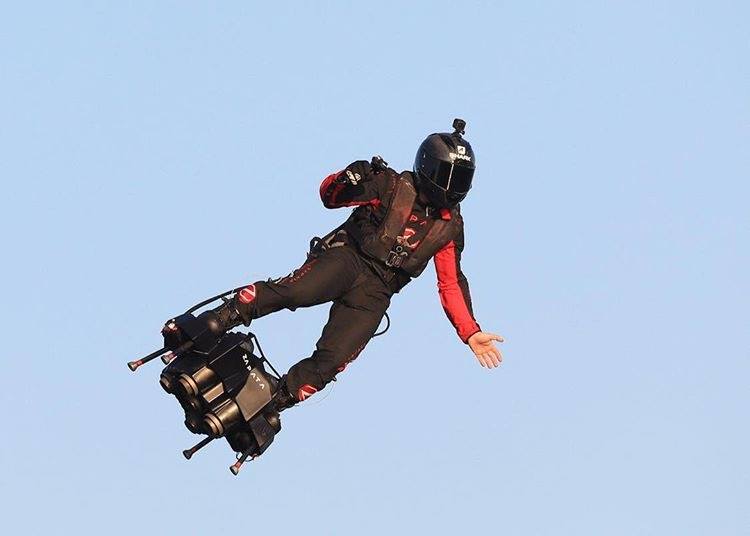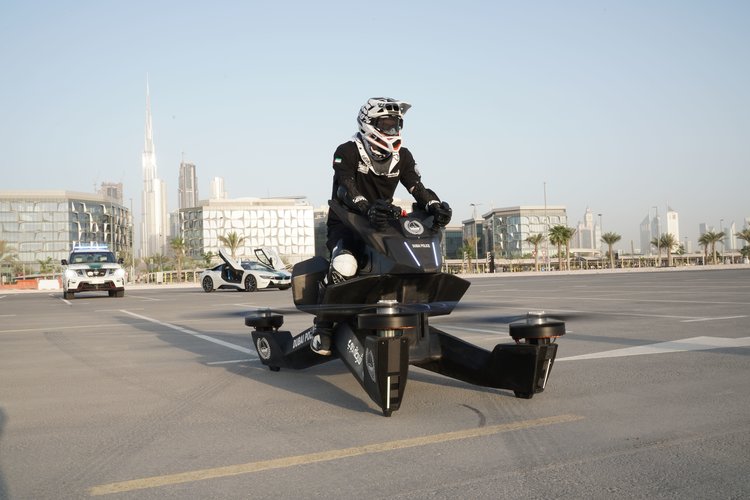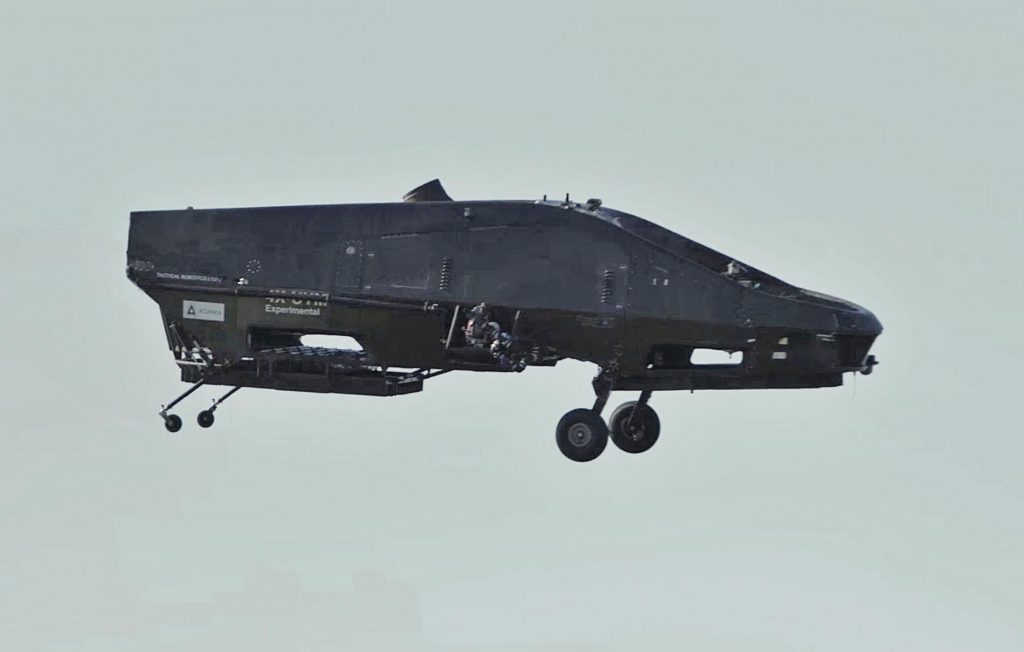The silver lining to Franky Zapata’s cross-Channel flight cloud

Franky Zapata, the flying enthusiast who attempted to cross the English Channel on his personal VTOL on July 25, has been unsuccessful. The VTOL – dubbed Flyboard Air – is fitted with five jet turbines and fueled by kerosene carried in a backpack.
He took off at 9am local time from Sangatte in France and aimed to land at St. Margaret’s Bay in the UK, covering approximately 35 kms (22 miles) in 20 minutes.
Zapata planned to refuel his backpack halfway into the flight, on a boat in the middle of the Channel. But a movement of the landing platform due to waves affected his descent.
“When I got closer to the platform, the boat took a wave and it hit the foot of the machine and broke it,” Zapata told a press conference shortly after his flight.
“I lost balance; I fell in the water. The flyboard is damaged, the electronic part has to be redone, the motors are ruined but the base is saved,” he continued.
However, it seems the only takeaway from his flight – at least in the popular media – has been its failure. But there is a silver lining.

Credit: Zapata Racing
Zapata covered 18 kms (11 miles) during the putative cross-Channel flight, thus improving on his 2016 Guinness World Record for the ‘Farthest hoverboard flight’ by nearly nine times the distance. And he intends to try the crossing again as early as next week, according to some reports. Previously, he flew 2.5 kms off the southern coast of France.
Zapata Racing – his company which developed the Flyboard Air – is also looking into military and civilian applications for its products.
A spokesperson for the company told Revolution.Aero that the Flyboard Air’s technology will be adapted for different applications. “We are already in talks with the French military at the moment,” she said.
She added that operating the Flyboard Air would require a lot of practice. “It is very physical and to be a good pilot you need many hours of training.”
Meanwhile, similar technologies are already paving the way for VTOL applications. Californian tech start-up Hoversurf, which built and delivered the world’s first eVTOL hoverbike last November, has already received orders from all around the world.

Courtesy: Hoversurf
One of Hoversurf’s clients, the Dubai police – which took delivery of the Scorpion 3 hoverbike – plans to introduce a unit of first responders to access hard-to-reach areas. It aims to have the eVTOLs in action by 2020.
Hoversurf’s COO, Joseph Segura-Conn told VTOL Investor the company’s focus was ‘Special Use’ cases like Police Force and Special Forces – ‘Search and Rescues’. The Scorpion 3 can fly for 30 minutes with full charge.
Equally, in the Unmanned Autonomous Vehicle (UAV) space, Tactical Robotics a subsidiary of Urban Aeronautics) has tested the ‘Cormorant’ (formerly AirMule) for commercial applications.
According to the Urban Aeronautics website: “The Cormorant can carry an effective payload of more than 500 kgs (up to 764 kgs including fuel) and it does not require an airstrip. The Cormorant is a versatile UAV platform capable of preforming multiple tasks, ranging from logistics and cargo services to fire-fighting and aerial spraying.”

Credit: Tactical Robotics
And of course, it is difficult to forget consumer giants Amazon and Costa Coffee’s test drone deliveries.
Whether we want it or not, the future is likely to be filled with ubiquitous airborne technological applications – and VTOLs will likely be at the centre.






